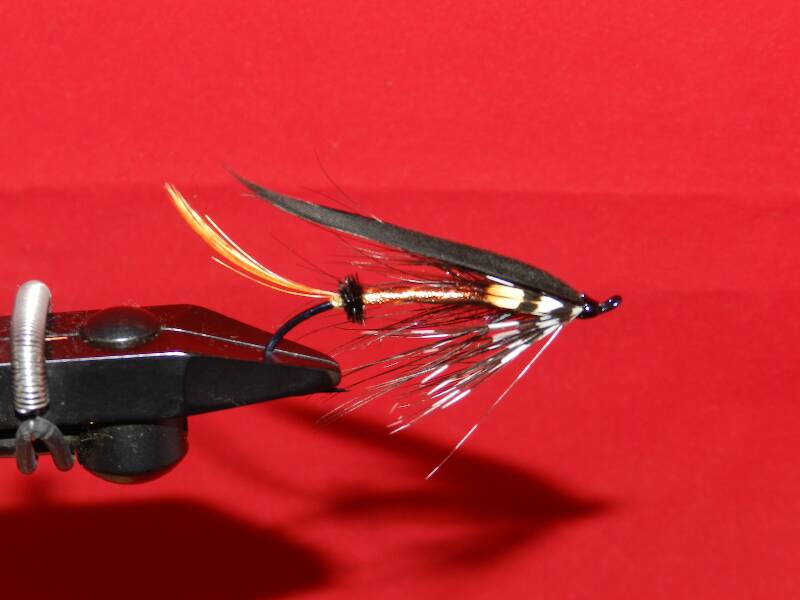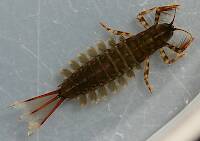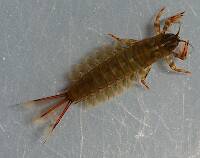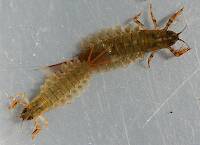
Hex Mayflies
Hexagenia limbata
The famous nocturnal Hex hatch of the Midwest (and a few other lucky locations) stirs to the surface mythically large brown trout that only touch streamers for the rest of the year.
Featured on the forum

This one seems to lead to Couplet 35 of the Key to Genera of Perlodidae Nymphs and the genus Isoperla, but I'm skeptical that's correct based on the general look. I need to get it under the microscope to review several choices in the key, and it'll probably end up a different Perlodidae.

Troutnut is a project started in 2003 by salmonid ecologist Jason "Troutnut" Neuswanger to help anglers and
fly tyers unabashedly embrace the entomological side of the sport. Learn more about Troutnut or
support the project for an enhanced experience here.
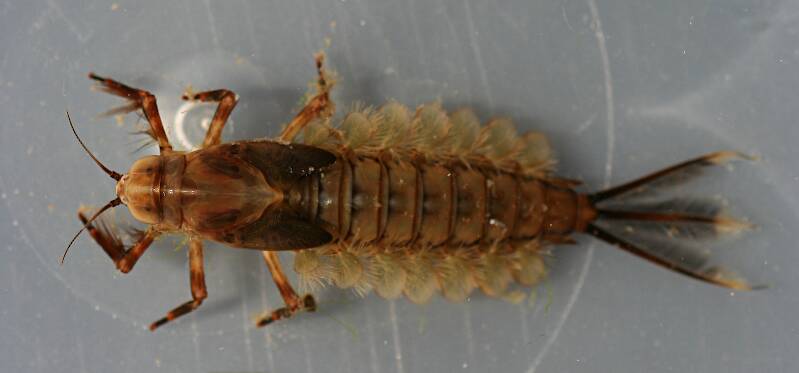
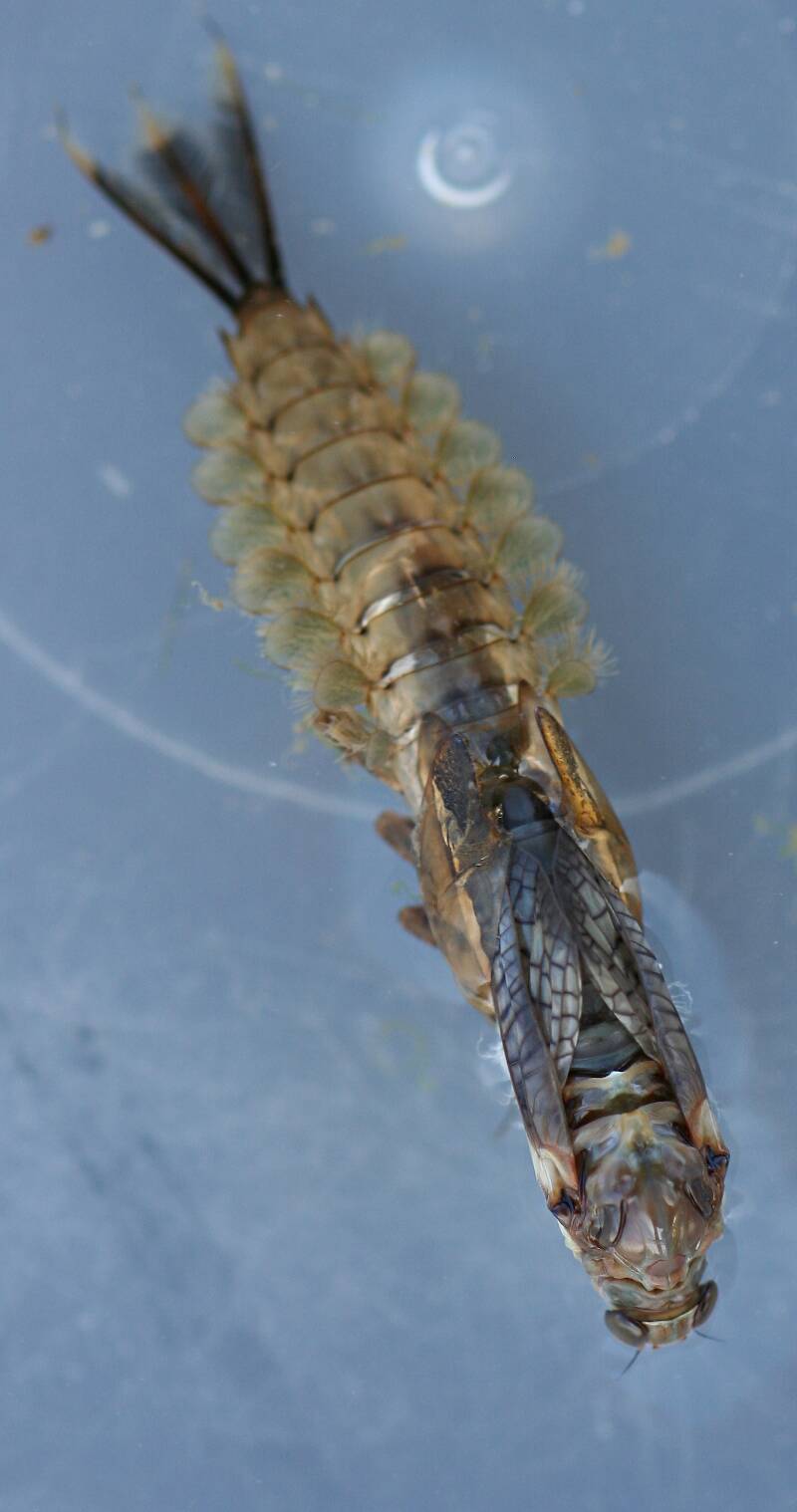
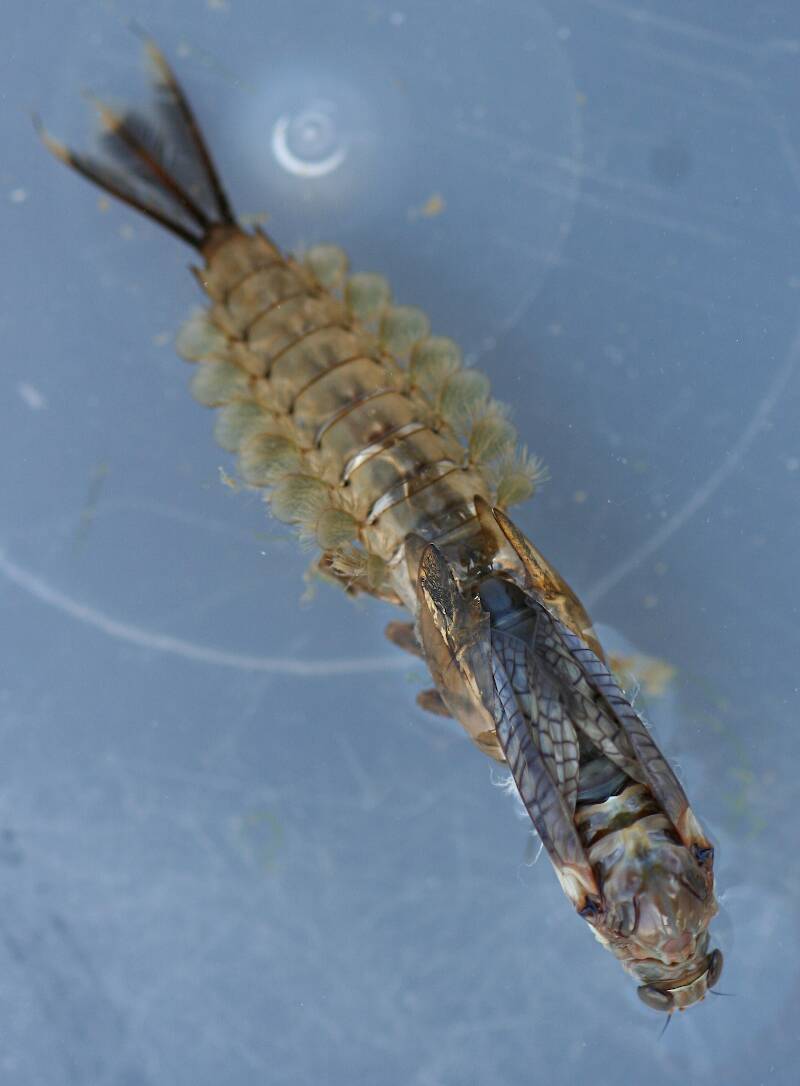
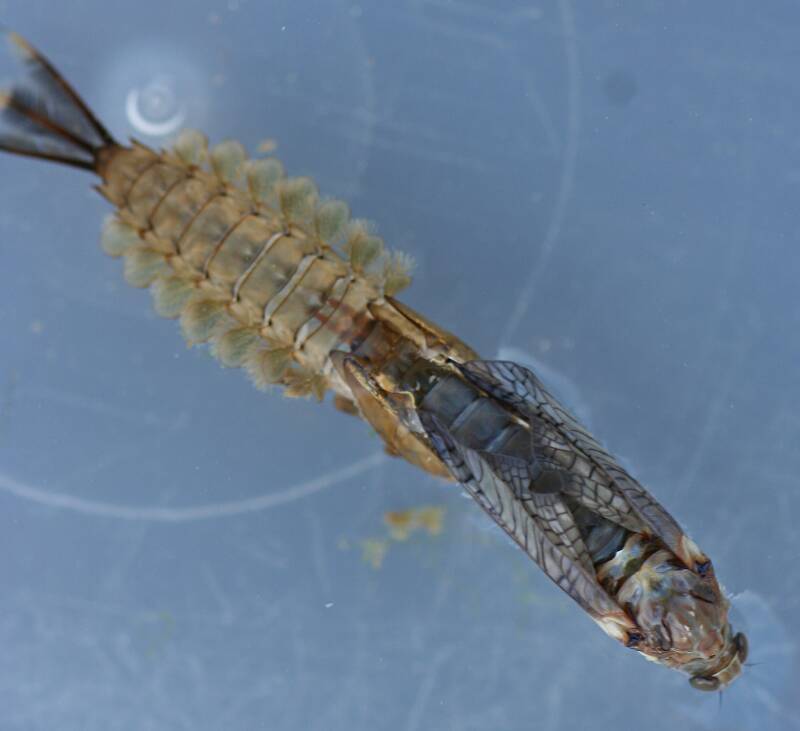
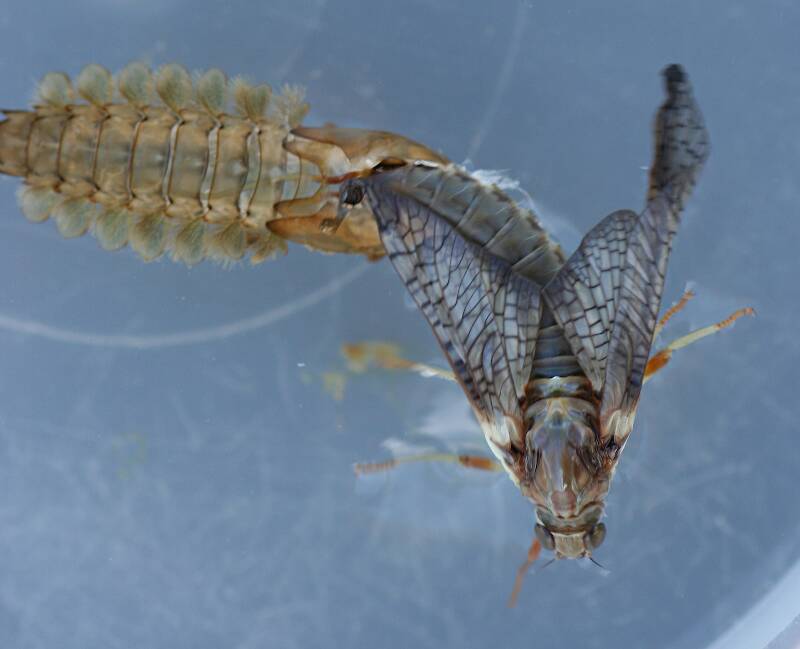
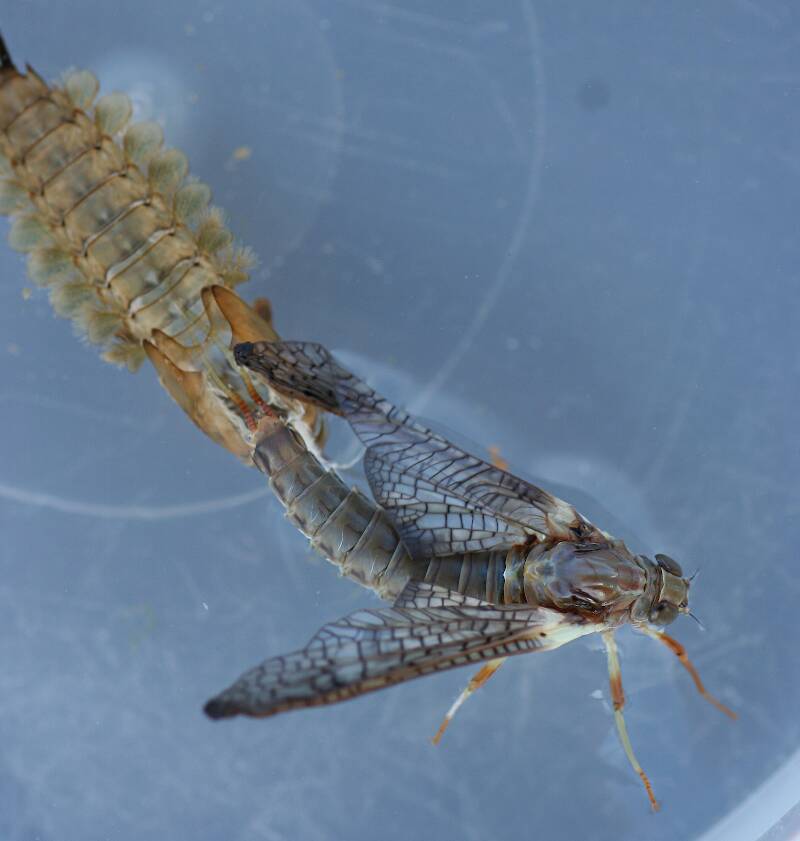
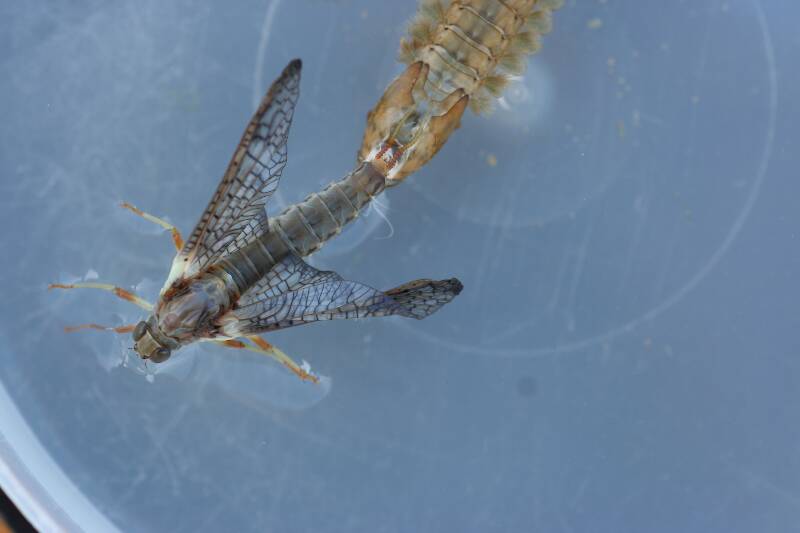
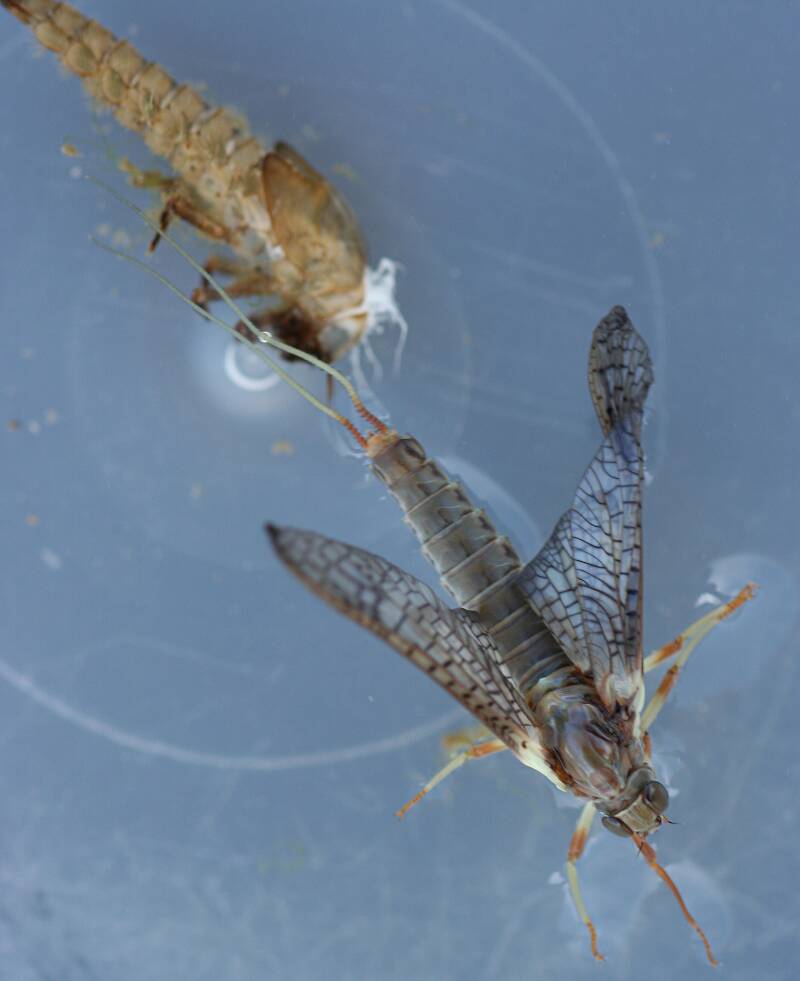
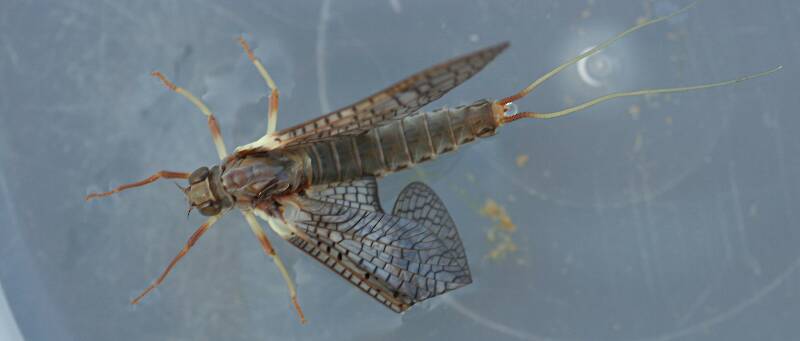
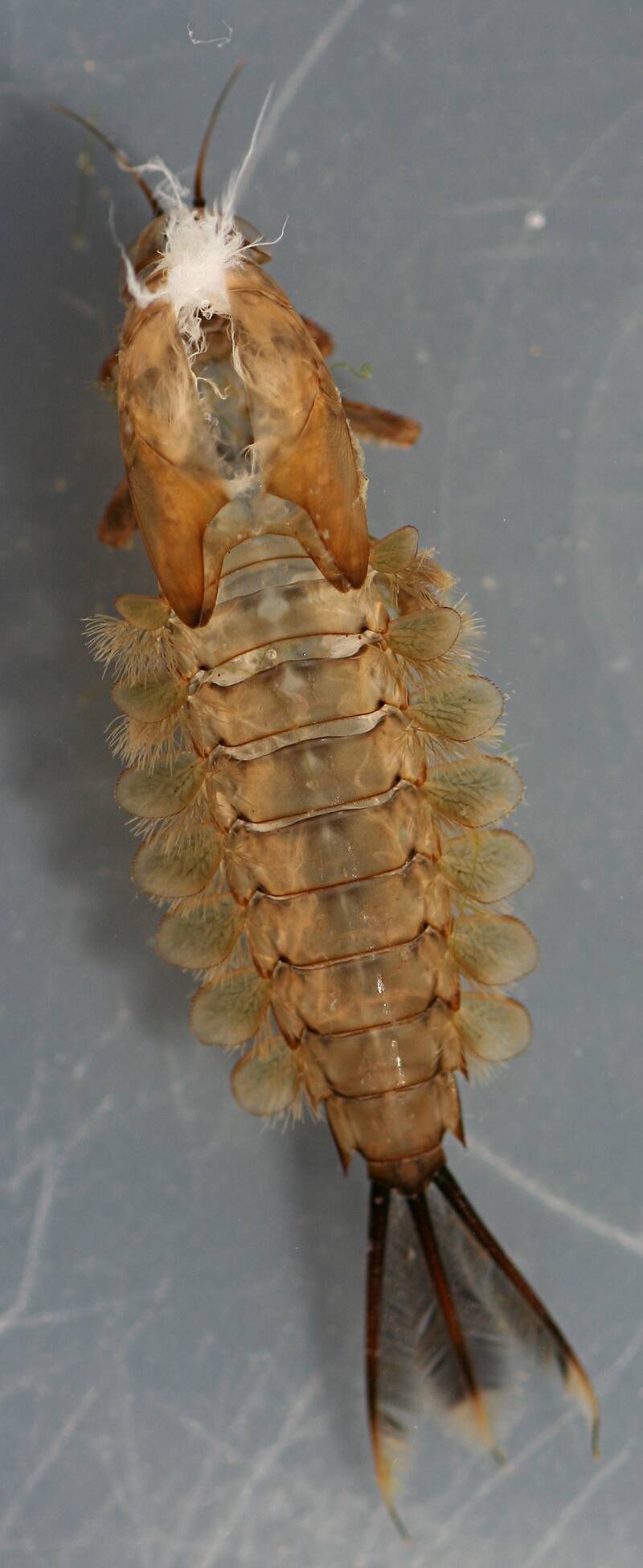
Millcreek on Oct 16, 2014October 16th, 2014, 1:52 pm EDT
The season for Isonychia is pretty much past on the Russian River for the year but I found this straggler today. When I caught the nymph it was kind of sluggish and twitching. Thought it was injured during collection but then noticed it had an unusual, almost plastic look to it and about half an hour later the adult started emerging. Isonychia nymphs usually crawl out on a rock or piece of wood when they emerge but apparently they can do it in calm water as well. Doesn't take long for the whole process. From the exoskeleton splitting along the back to full emergence of the subimago took about 30 seconds.
Female. Length of larva and subimago 22 mm (excluding cerci).
Female. Length of larva and subimago 22 mm (excluding cerci).
"If we knew what it was we were doing, it would not be called research, would it?"
-Albert Einstein
-Albert Einstein
Martinlf on Oct 17, 2014October 17th, 2014, 6:13 pm EDT
Love these emergence photos! Thanks.
"He spread them a yard and a half. 'And every one that got away is this big.'"
--Fred Chappell
--Fred Chappell
Nutman71 on Dec 29, 2016December 29th, 2016, 12:45 am EST
This is a great photo set , color of shuck and wing, I have been doing my own study of these as I love to fish them when I can. There seems to be an idea that they only emerge in slow water , or on the banks of the rive. I have seen this bug swim at super speeds and emerge mid river, with fish destroying them! I'm working on emerger patterns for them.
Fly tier interested in bug life
Martinlf on Dec 29, 2016December 29th, 2016, 2:14 pm EST
Nutman, I've watched them emerge midstream also. So neat! A klinkhamer style emerger works at times. I sometimes tie it with a twisted marabou abdomen, with some hanging off the end as tails/ shuck.
"He spread them a yard and a half. 'And every one that got away is this big.'"
--Fred Chappell
--Fred Chappell
PaulRoberts on Dec 29, 2016December 29th, 2016, 10:13 pm EST
Yes, wonderful images.
I've seen mid-stream emergences too.
Loved those Iso's (bicolor), when I was back East. Haven't run into anything fishable here yet. I had a nymph tie I really liked, both dead-drifted and fished actively. One particularly satisfying memory was finding Iso activity on a small unsung NY stream on the day Charlie Meck arrived to fish it with me (he putting together a book on unsung streams). I took a deep-shouldered brown in the 16" range on a 6-1/2ft 3wt from that little creek that day, swinging my Iso tie.
I've seen mid-stream emergences too.
Loved those Iso's (bicolor), when I was back East. Haven't run into anything fishable here yet. I had a nymph tie I really liked, both dead-drifted and fished actively. One particularly satisfying memory was finding Iso activity on a small unsung NY stream on the day Charlie Meck arrived to fish it with me (he putting together a book on unsung streams). I took a deep-shouldered brown in the 16" range on a 6-1/2ft 3wt from that little creek that day, swinging my Iso tie.
Millcreek on Dec 30, 2016December 30th, 2016, 3:13 am EST
I've never seen Isoynchia emerge midstream, but my references are western species. They seem to emerge on shore or near it, from rocks or wood where there is a dry area. I'll keep my eyes out for midstream emergence.
"If we knew what it was we were doing, it would not be called research, would it?"
-Albert Einstein
-Albert Einstein
PaulRoberts on Dec 30, 2016December 30th, 2016, 6:34 am EST
I. biocolor also emerges from shoreline substrate, like many stoneflies do. But they, like some stoneflies, can also emerge mid-stream. Isn't there anything rock solid in the living world?
Jmd123 on Jan 2, 2017January 2nd, 2017, 10:51 am EST
"Isn't there anything rock solid in the living world?"
Not if Mother Nature has anything to do with it! Remember, insects don't read entomology text books...or any other books for that matter.
I can remember many times when I was delineating a wetland and certain plant species were growing in the "wrong" place. Well, plants don't read wetland manuals...
Jonathon
Not if Mother Nature has anything to do with it! Remember, insects don't read entomology text books...or any other books for that matter.
I can remember many times when I was delineating a wetland and certain plant species were growing in the "wrong" place. Well, plants don't read wetland manuals...
Jonathon
No matter how big the one you just caught is, there's always a bigger one out there somewhere...
Quick Reply
Related Discussions
Topic
Replies
Last Reply
Re: Lots of new pictures to check out, coming online tonight/tomorrow
In General Discussion by Troutnut
In General Discussion by Troutnut
1
Oct 4, 2006
by Dinerobyn
by Dinerobyn
4
Apr 17, 2009
by GONZO
by GONZO



